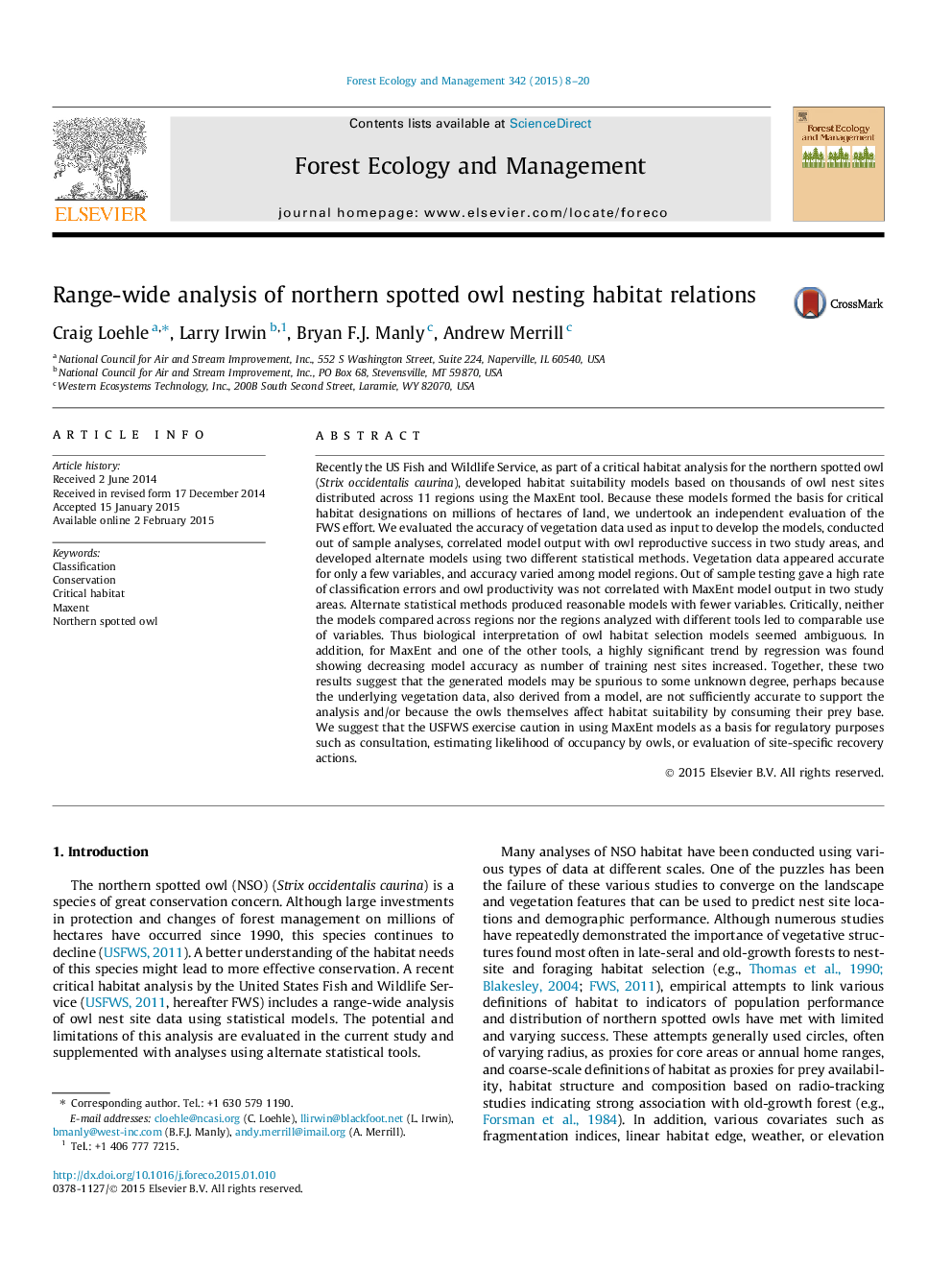| کد مقاله | کد نشریه | سال انتشار | مقاله انگلیسی | نسخه تمام متن |
|---|---|---|---|---|
| 86298 | 159177 | 2015 | 13 صفحه PDF | دانلود رایگان |
• We evaluated MaxEnt habitat models developed by USFWS for northern spotted owls.
• Models using other statistical tools were more parsimonious and used different variables.
• Out of sample testing and evaluation of nest productivity vs. MaxEnt output were performed.
• Multiple lines of evidence pointed to problems with the analysis.
• MaxEnt models for the owls do not form a reliable basis for management.
Recently the US Fish and Wildlife Service, as part of a critical habitat analysis for the northern spotted owl (Strix occidentalis caurina), developed habitat suitability models based on thousands of owl nest sites distributed across 11 regions using the MaxEnt tool. Because these models formed the basis for critical habitat designations on millions of hectares of land, we undertook an independent evaluation of the FWS effort. We evaluated the accuracy of vegetation data used as input to develop the models, conducted out of sample analyses, correlated model output with owl reproductive success in two study areas, and developed alternate models using two different statistical methods. Vegetation data appeared accurate for only a few variables, and accuracy varied among model regions. Out of sample testing gave a high rate of classification errors and owl productivity was not correlated with MaxEnt model output in two study areas. Alternate statistical methods produced reasonable models with fewer variables. Critically, neither the models compared across regions nor the regions analyzed with different tools led to comparable use of variables. Thus biological interpretation of owl habitat selection models seemed ambiguous. In addition, for MaxEnt and one of the other tools, a highly significant trend by regression was found showing decreasing model accuracy as number of training nest sites increased. Together, these two results suggest that the generated models may be spurious to some unknown degree, perhaps because the underlying vegetation data, also derived from a model, are not sufficiently accurate to support the analysis and/or because the owls themselves affect habitat suitability by consuming their prey base. We suggest that the USFWS exercise caution in using MaxEnt models as a basis for regulatory purposes such as consultation, estimating likelihood of occupancy by owls, or evaluation of site-specific recovery actions.
Journal: Forest Ecology and Management - Volume 342, 15 April 2015, Pages 8–20
